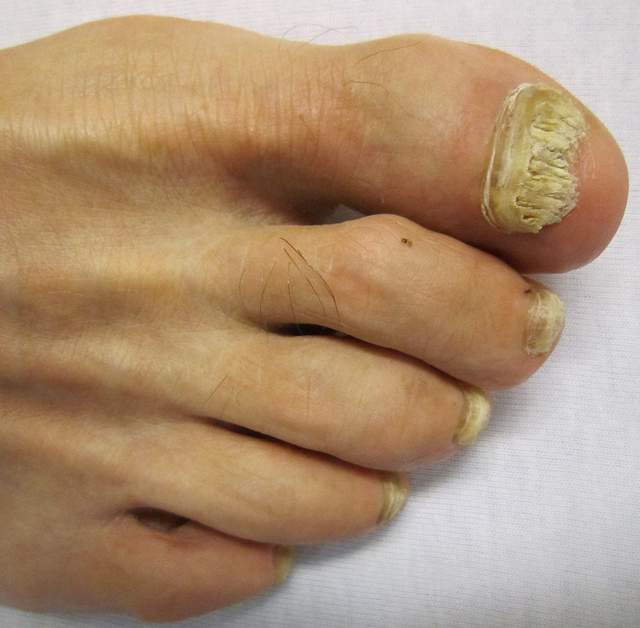
Toenail fungus, also known as onychomycosis, is surprisingly common and an estimated 10% of the US population suffers from this condition (source: Johns Hopkins Health Information Library.) If your toenails are yellow, brittle, or unusually thick, you may have a case of toenail fungus and should consult a podiatrist about treatment. Family physicians often misdiagnose thick toenails which are the result of repeated trauma (think small shoes/boots), which can look like toenail fungus, which is why you should consult a podiatrist instead. They have a much better clue.
Toenail fungus is a microscopic infection that occurs under toenails when they are frequently exposed to warm, moist environments, including sweaty hiking boots and trail shoes. Nail fungus is not the same as athlete’s foot which just affects the skin of your toes, but the two can occur at the same time.
Toenail infections are typically caused by a fungus that belongs to a group of fungi called dermatophytes. They gain entry under your nail through tiny tears in the nail or the nail bed that can be caused by smashing your toes against the inside of your boots when hiking down steep downhill descents, or other foot-related trauma. A small percentage of toenail fungus cases can also be caused by other types of fungus such as mold or yeast, so an accurate diagnosis should be undertaken to pick the most effective treatment.
Once a nail infection begins and it can persist indefinitely if not treated, and even spread to other toes. There are several different forms of treatment including oral medications and topical lacquers that you paint on your nail, but stronger remedies require a prescription from your doctor. This is advisable because toenail fungus can lead to other complications in individuals with diabetes or other immune deficiency disorders. Some oral medications can increase the risk of harmful liver-related side effects in certain individuals, so be cautious about doctors who want to treat you with oral, rather than topical medications.
Topical Lotions for Treating Toe Nail Fungus
- Kerasal Nail Fungal Nail Renewal Treatment
- Fungi Nail 1oz Solution, With Brush
- Probelle “Extra Strength” Natural Fungal Nail Gel
The best way to prevent toenail fungus is to make sure that your boots and shoes fit properly and that your toes have plenty of room to move around, even after they’ve swollen as a normal side effect of hiking. Try to wash and wear clean socks or liners every day and keep your toenails trimmed to prevent tears to the nail edges or other trauma such as blackened toe nails, which can increase your risk of toenail fungus.
 SectionHiker.com Backpacking Gear Reviews and FAQs
SectionHiker.com Backpacking Gear Reviews and FAQs
A bit of an update: I visited my dermatologist a few weeks ago and she told me that it's just not worth treating toe nail fungus unless it is so painful that you can't wear shoes. She also said that the most effective treatments are oral (pills) and that you can't drink any alcohol for 6 months when you take them because they hammer your liver.
I’ve used ‘Emtrix’ with good results.
a
One needs to remember that the nail affected by fungus will not return to normal once treatment begins. Treatment stops fungus growth, but only time for the affected nail to grow out will lead to healthy looking nail.
I have had tow nail fungus for over 50 years. The topical treatments don’t work and the pills work to a small degree, but can lead to liver damage. The way I keep it under control is to use a pedicure electric nail sander. Every two to three months and before I go on a long thru hike I sand away all of my nails and if I am going to be out four to six months I will bring a small file. When I sand i just remove the thick nails down a bit.